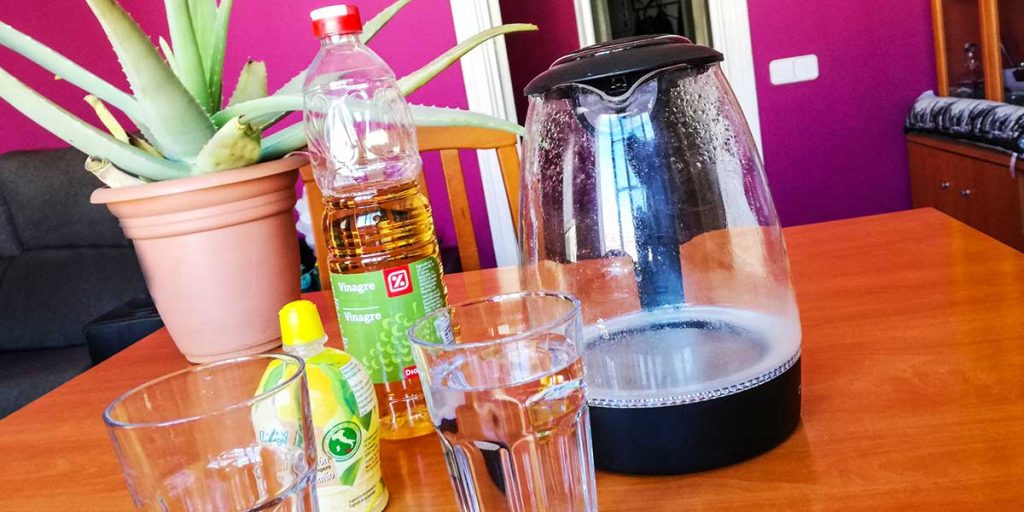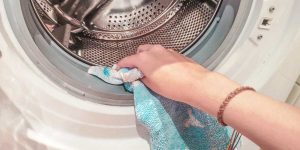Probably everyone has seen this before. Even in areas with the best tap water quality, a white layer has settled in the kettle after a few weeks. This white layer is, of course, lime.
To extend your kettle’s lifespan, you should, therefore, regularly remove the limescale from your kettle. As you have probably already guessed, there are different methods of cleaning kettles. Vinegar is just one of the many options.
As always, we have tested various methods for cleaning the kettle. But before we teach you how to descale a kettle using vinegar, let’s have a look at what exactly the lime is all about.
Why do I have limescale in the kettle?
The harder the water quality in your region, the more limescale will settle in your kettle. But not only is the kettle affected by calcification, but your washing and coffee machine should also be regularly discarded.
The lime is a calcium carbonate that separates from the water when heated. For this reason, the lime also tends to settle on the ground or the heating rods of your kettle first, as it is hottest here.
As soon as the water is heated, the calcium carbonate dissolves from the water and settles as lime. However, this only happens at temperatures above 65°C (150°F).
Why do I have to descale my kettle?
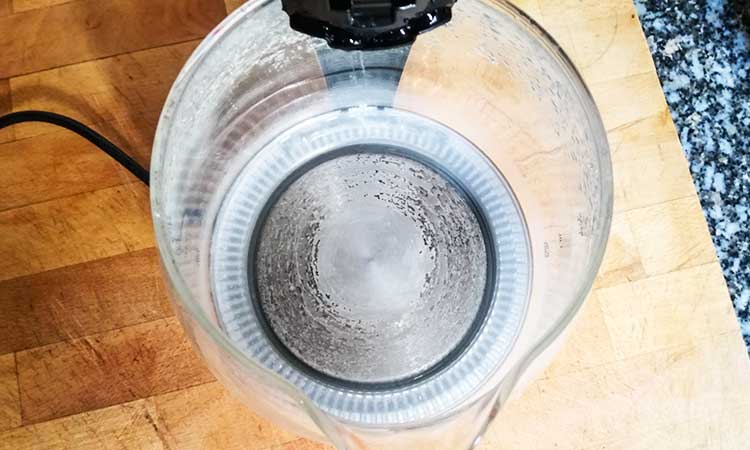
Although limescale is not harmful to human health, you should descale your kettle regularly. On the one hand, the lime can negatively affect the taste of the water. Hard or heavily calcified water is usually perceived as less pure than soft water with little calcium. Besides, it’s definitely not everyone’s cup of tea if bits of limescale is floating around your cup, am I right?
Another reason to remove limescale from the kettle is that the settled limescale slows the water’s heating process. This can quickly lead to increased energy costs and longer waiting times. Other kettles do not measure the water temperature, and so the kettle may switch off due to the limescale layer before the water has actually boiled.
How can I avoid limescale in the kettle?
Of course, there is also a practical tip to prevent so much limescale from settling on the bottom of your kettle in the first place. Only boil as much water as you really need. This way, the limescale from the leftover water cannot settle to the bottom of your kettle.
Of course, you can also drain the leftover water. To avoid wasting water, you can also catch it and, e.g., use to water your plants (of course, let it cool down first!).
How to descale a kettle with vinegar
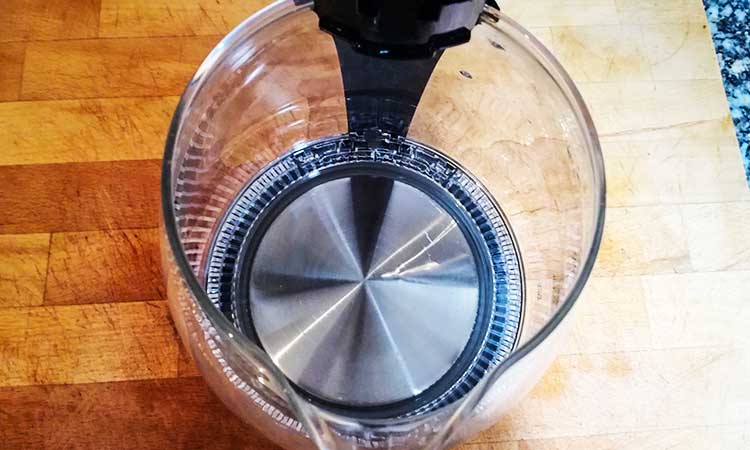
Our favorite – and in our opinion, the easiest – method for descaling the kettle is vinegar. To clean the kettle using vinegar, you need simple regular vinegar, water, and of course, your kettle.
- Fill the kettle with water and add a couple of 2-3 tablespoons of vinegar.
- Now let the water boil.
- Let the vinegar water soak in for about 10 minutes.
- Then you can pour off the water. In the best-case scenario, your kettle will now shine like new.
- If there is still undissolved limescale in the kettle, you can help with a dish brush.
- Now rinse the kettle several times with clear water. It’s even faster if you make the water boil and then drain it – we don’t want your next tea to taste like vinegar, do we?
How to clean a kettle without vinegar? – Best Practices
As I said, our favorite method is definitely to clean the kettle with vinegar. But there are other ways to get rid of stubborn limescale.
Descale the kettle with citric acid
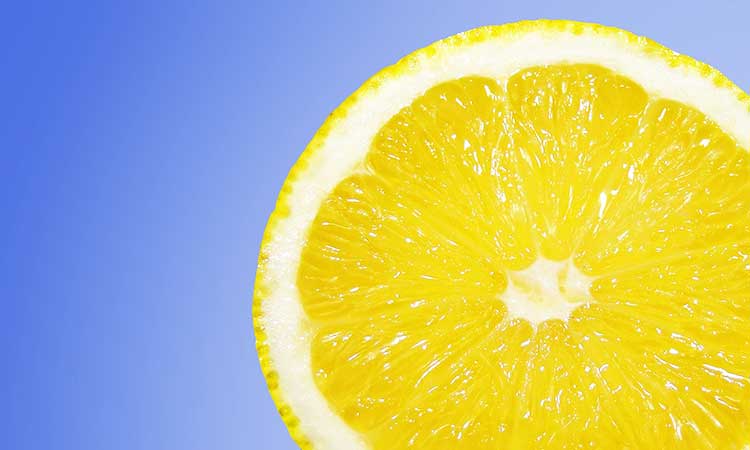
Similar to vinegar, citric acid also has a decalcifying effect. A great advantage of lemons is that, unlike vinegar, they leave a pleasant scent.
- Fill the kettle with water and add a couple of 2-3 tablespoons of citric acid.
- Heat the mixture in the kettle (do not boil).
- Let the citric acid water work for about 10 minutes.
- Then you can pour off the water. In the best-case scenario, your kettle will now shine like new.
- If there is still undissolved limescale in the kettle, you can help with a dish brush.
- Now rinse the kettle several times with clear water. It is even faster if you heat the water to the boil and then drain it.
Descale with lemon slices
No citric acid at home? Then lemon slices will work as well.
- Cut half a lemon into slices.
- If there is a lot of calcification, you can rub the lemon slices directly over the bottom of the kettle so that the lemon juice comes out. If there is slight calcification, follow step 3.
- Fill the kettle with water and add a few of the lemon wedges.
- Heat the mixture in the kettle (do not boil).
- Let the lemon water work for about 10 minutes.
- Then you can drain the water and remove the lemon slices. In the best-case scenario, your kettle will now be free of limescale.
- If there is still undissolved limescale in the kettle, you can help with a dish brush.
- Now rinse the kettle several times with clear water. It is even faster if you heat the water and then drain it.
Use a descaler
Instead of relying on home remedies, you can, of course, also use a commercial descaler. You can find it in many supermarkets, drug stores, or online here.
Just follow the description on the package.
Descale the kettle with baking soda

Natron is a real all-rounder in the household. It is, therefore, also perfect for descaling your kettle.
- Fill the kettle with water (do not fill it to the limit!) And add 2-3 teaspoons of baking soda (or commercial baking powder).
- Now let the water boil.
- Let the sodium mixture work for about 5 minutes.
- Then you can pour off the water. In the best-case scenario, your kettle will now shine like new.
- If there is still undissolved lime in the kettle, you can help with a dish brush.
- Now rinse the kettle several times with clear water. It is even faster if you bring the water to boil and then drain it.
Descale the kettle with a denture cleaner
- Fill the kettle with water (don’t fill it to the limit!)
- Now add 1-2 tablets of denture cleaner.
- Let the mixture sit for several hours or overnight.
- Now pour the water off.
- If the lime is still not completely gone, you can also use a dish brush.
- Pour fresh water into the kettle and bring it to the boil to remove the denture cleaner’s remains.
- Drain the water.
Descale the kettle with aspirin
- Fill the kettle with water (don’t fill it to the limit!).
- Now add 1-2 tablets of aspirin.
- Let the mixture sit for several hours or overnight.
- Now pour the water off.
- If the limescale has still not completely disappeared, you can also use a dish brush.
- Add fresh water to the kettle and bring it to the boil to remove the aspirin tablets’ remains.
- Drain the water.


